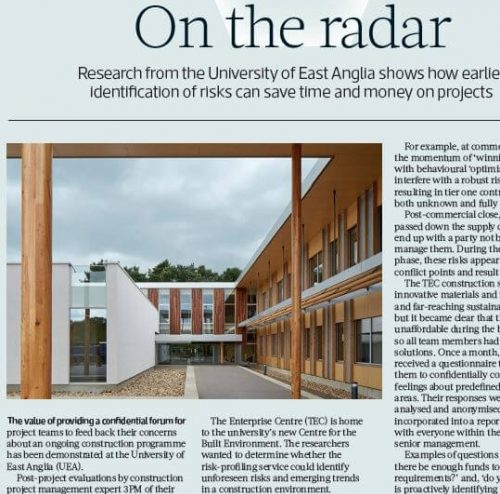GOVE VS M&S HAS SET A HIGH-PROFILE LINE IN THE SAND FOR RETROFITTING –
NOW IT’S TIME FOR A PERMANENT MINDSET RESET
By Matt Schaaf, Partner in Commercial Project Management at 3PM

Michael Gove’s recent decision to reject the redevelopment of the M&S site on Oxford Street has elevated the ongoing question of whether to demolish or refurbish existing buildings into arguably the highest profile case of its kind.
Supported by the likes of the 20th Century Society and SAVE, the case set a precedent by being the first of its kind – the first public inquiry that considered sustainability alongside heritage as a major deciding issue.
In the case of M&S, the decision hinged on Gove’s view that the development hadn’t sufficiently demonstrated that a refurbishment option wasn’t viable and that a full development scheme would produce less carbon in the future as green energy will be more readily available.
The first point is a clear indication that developer’s and design teams will always need a robust process to review options to refurbish a building, before turning to new build options moving forward. This can be done by examining the Minimum Viable Product a developer needs to be able to let a building and then looking for ways to add area, rationalise floor plates and refresh finishes to add value. Not only will this help to reduce embodied carbon, but it has the potential to reduce the cost to the client and reduce time to market.
The second point lies at the heart of many refurbishment schemes. When does the embodied carbon of a new build balance against the operational carbon of an in theory less efficient refurbishment? Our understanding of carbon modelling as an approach is still in its infancy – many feel the science is new and the data not good enough but it’s 2023 and the concept of reducing the amount of embodied carbon now on the basis we will improve green technology in the future should be a sound one if the Government continues to invest in it.
How we assess the balance of embodied versus operational carbon will evolve moving forward: it has to! Whole life considerations need to be undertaken based on clear replacement cycles.The design life of different building elements are enshrined in British Standards but haven’t been revisited in the context of sustainability, which makes them archaic to say the least. Why is the design life of a structure 60 years when the Tower of London has stood for almost 1,000? Lengthening these periods would shift the balance between embodied and operational carbon, a key factor in deciding whether to rebuild or refurbish.
One of the criticisms of the Levelling Up Secretary’s decision is the economic impact it will have. One of the key challenges in refurbishing existing buildings is a supply chain which is set up to carry out new build projects and views refurbishment schemes with caution. There is huge potential for the UK to promote economic growth by developing new industries aligned to sustainable development and it’s crucial that both public and private bodies support this.
We recently worked as part of an extended team that agreed to forgo an existing planning permission for demolition and rebuild of a fairly high-profile central London office building and instead retrofit. The decision was the right one – not just environmentally – but economically too: we delivered a project that will be low carbon, saving two blue whales worth of embodied carbon while also saving six months on the build programme, delivered 2,000 sq ft extra NIA and a £10m capital cost saving.
It can be done, and it should be.
My personal view is that we need to respect our heritage buildings and give them a new lease of life wherever possible – they’ve earned their right to survive with their sound original fabric and structure, remarkably built without the benefits of technology and knowledge we have today. The least we can do is apply the latter towards keeping them and working with what has survived longer than any of us! It won’t always be possible, but the approach should be retrofit first (rather than retrofit only).
The merits of the individual case of M&S will continue to be debated. What is certain is that project teams will have to make an extremely robust case to gain planning approval for a new build option from now on and this is absolutely crucial if we are to change the mindset of ‘it’s too difficult’ to ‘we can do this’. And that is a very promising and possible outcome from all of this.




























